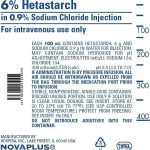
Contents
- 1 Hydroxyzine (Vistaril) vs. hydralazine (Apresoline)
Hydroxyzine (Vistaril) vs. hydralazine (Apresoline)
Hydroxyzine is an antihistamine with anticholinergic and sedative properties used to treat itching, anxiety, tension, and induce sedation prior to or after anesthesia. It is also used for nausea, vomiting, and alcohol withdrawal.
Hydralazine is an antihypertensive medication used to treat high blood pressure. It is a peripheral arterial vasodilator that relaxes blood vessels, which carry blood away from the heart and toward the organs and tissues. Hydralazine is beneficial for congestive heart failure (CHF) treatment when used with isosorbide dinitrate (Isordil, Isordil Titradose, Dilatrate-SR) as an alternative for patients unable to tolerate ACE inhibitors.
QUESTION
What are the side effects of hydroxyzine and hydralazine?
Hydroxyzine
Common side effects:
- Sedation
- Tiredness
- Sleepiness
- Dizziness
- Disturbed coordination
- Drying and thickening of oral and respiratory secretions
- Stomach distress
Other important side effects include:
Hydroxyzine should be used with caution in persons with narrow-angle glaucoma, prostatic hypertrophy, hyperthyroidism, cardiovascular disease, hypertension, and asthma.
Hydralazine
Common side effects:
- Headache
- Anorexia
- Nausea
- Vomiting
- Diarrhea
- Palpitations
- Tachycardia
- Angina pectoris
Other less commonly reported side effects include:
- Constipation
- Paralytic ileus
- Low blood pressure
- Edema
- Paradoxical pressor response
- Shortness of breath
- Peripheral neuritis
- Numbness
- Tingling
- Tremors
- Muscle cramps
- Psychotic reactions
- Difficulty urinating
- Blood disorders
- Hypersensitivity type reactions
- Nasal congestion
- Flushing
- Abnormal tear production
- Conjunctivitis
What is the dosage of hydroxyzine vs. hydralazine?
Hydroxyzine
- Hydroxyzine takes effect within 30 to 60 minutes and lasts for 4 to 6 hours.
- Recommended dose for itching (pruritus) is 25 mg given 3 or 4 times daily orally or intramuscularly.
- For sedation, recommended dose is 50 to 100 mg orally or 25 to 100 mg intramuscularly.
- Anxiety and tension are managed with 50 to 100 mg in 4 divided doses or 50 to 100 mg intramuscularly in 4 or 6 divided doses.
- Alcohol withdrawal is treated with a 50 to 100 mg injection, repeatable every 4 to 6 hours as needed.
- The dose for nausea and vomiting is 25 to 100 mg by injection.
- Hydroxyzine can be taken with or without food.
Hydralazine
- Start treatment with a low dose and gradually increase based on individual patient response. Usual starting regimen is 10 mg orally four times daily for the first 2 to 4 days, then increase to 25 mg four times daily for the remainder of the first week.
- For the second and subsequent weeks, increase dosage to 50 mg four times daily (increase dose by 10 to 25 mg every 2 to 5 days).
- Maximum daily dose used in clinical studies is 300 mg.
- Initial dose for heart failure treatment is 10 to 25 mg orally 3 to 4 times daily.
- Usual dose is 225 to 300 mg daily in 3 to 4 divided doses.
For pediatric hypertensive emergencies, the dose is 0.5 mg/Kg IV every 4 hours.
What drugs interact with hydroxyzine and hydralazine?
Hydroxyzine
Hydroxyzine adds to the sedating effects of alcohol, benzodiazepines, narcotic pain medications, tricyclic antidepressants, and certain antihypertensive medications. It can also intensify the drying effects of other medications with anticholinergic properties.
Hydralazine
Sympathomimetics may decrease the effectiveness of hydralazine treatment.
By clicking "Submit," I agree to the MedicineNet Terms and Conditions and Privacy Policy. I also agree to receive emails from MedicineNet and I understand that I may opt out of MedicineNet subscriptions at any time.
Are hydroxyzine and hydralazine safe to use while pregnant or breastfeeding?
Hydroxyzine
- Limited studies suggest a possible relationship between hydroxyzine use in the first trimester of pregnancy and congenital abnormalities. Avoid hydroxyzine during the first trimester.
- It is not known if hydroxyzine is excreted into breast milk. Antihistamines are generally not recommended during breastfeeding.
Hydralazine
Use hydralazine in pregnancy only if the potential benefit justifies the potential risk to the fetus. It is used for treating high blood pressure during pregnancy.
Hydralazine is excreted in breast milk. Use cautiously while breastfeeding if treatment is necessary.
From
Heart Health Resources
Featured Centers
- What Are the Best PsA Treatments for You?
- Understanding Biologics
- 10 Things People With Depression Wish You Knew
Summary
Hydroxyzine (Vistaril) is an antihistamine with anticholinergic and sedative properties used to treat itching from allergies, anxiety, tension, sedation prior to or after anesthesia, nausea, vomiting, and alcohol withdrawal. Hydralazine (Apresoline) is an antihypertensive used to treat hypertension alone or in combination with other medications, and for hypertensive crisis and congestive heart failure.


